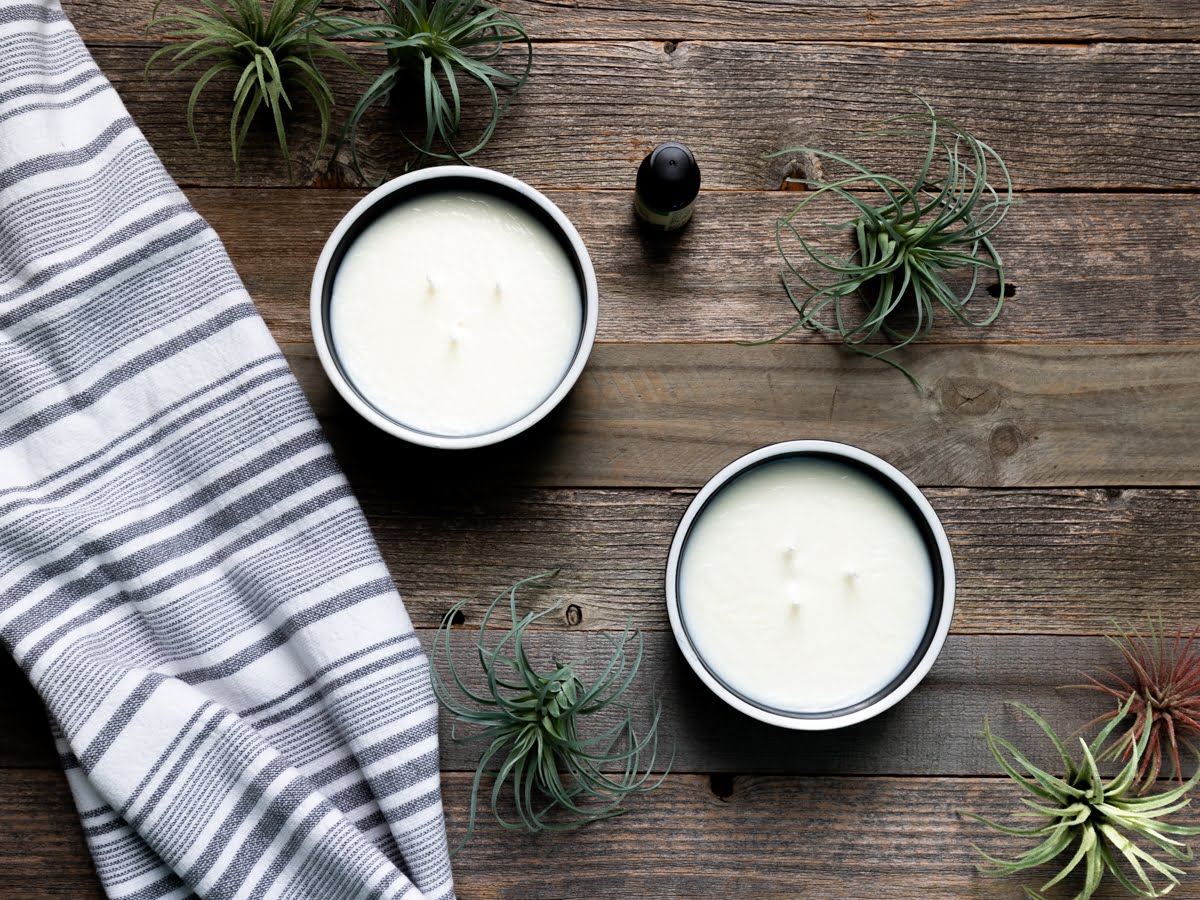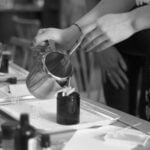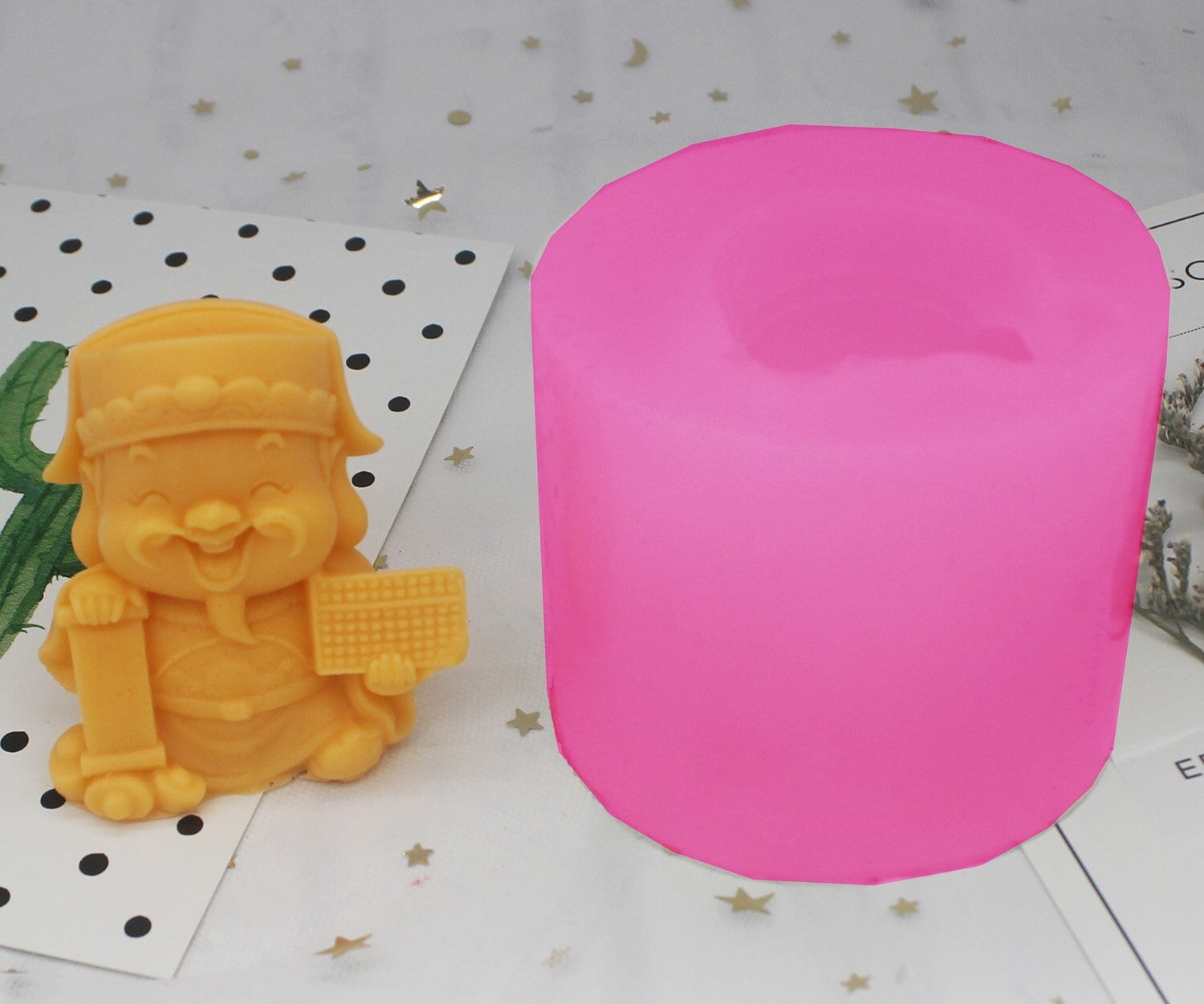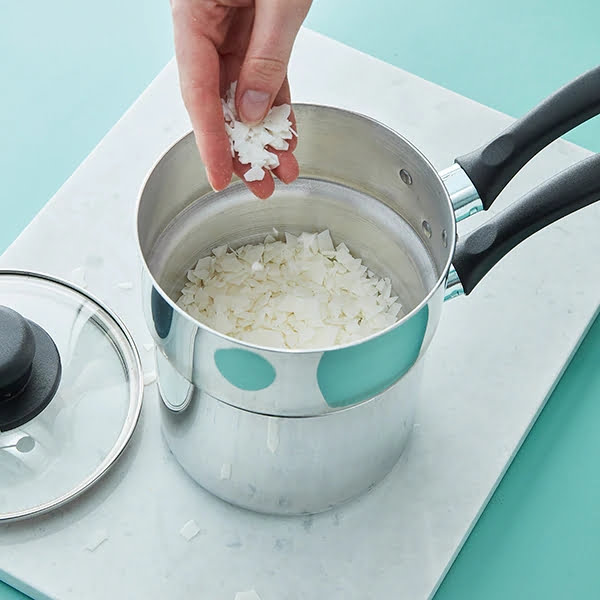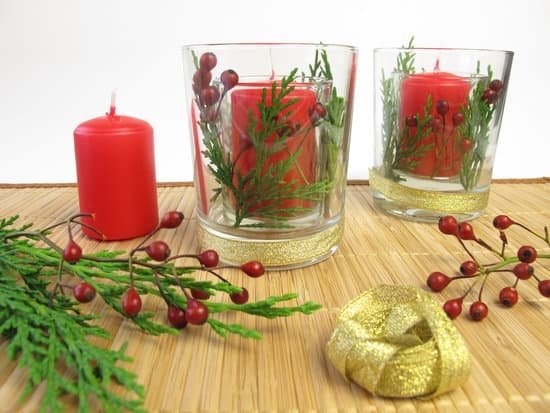Are you looking to learn how to increase fragrance in candle making? Fragrance is a key component of creating beautiful, appealing candles, and understanding how to maximize scent throw can take your candle making to the next level. In this article, we will explore the various factors that impact fragrance intensity in candle making, from choosing the right oils to troubleshooting common issues.
Choosing the perfect fragrance oils is essential when it comes to creating highly scented candles. We will discuss how to select the right oils for your specific needs and preferences. Properly measuring fragrance oils is also crucial for achieving the desired scent throw, so we will provide tips on how to do so accurately.
Additionally, we will delve into different techniques for increasing scent throw in candles, such as exploring the impact of wax type and wick selection on fragrance intensity. By understanding these factors and how they contribute to the overall fragrance of your candles, you can enhance the aroma and appeal of your final products. Whether you are an experienced candle maker or just starting out, this guide will equip you with valuable insights into maximizing fragrance in candle making.
Choosing the Right Fragrance Oils for Your Candles
When it comes to increasing fragrance in candle making, choosing the right fragrance oils is crucial. The type and quality of fragrance oils you use can significantly impact the overall scent throw and intensity of your candles.
Fragrance Oil Quality
One of the most important factors in choosing the right fragrance oils for your candles is the quality of the oils. Opt for high-quality, concentrated fragrance oils that are specifically designed for candle making. These oils are formulated to disperse evenly throughout the wax, resulting in a more potent scent throw.
Fragrance Oil Types
There are a wide variety of fragrance oil options available, from floral and fruity scents to cozy and comforting aromas. Consider the theme or purpose of your candles when selecting fragrance oils. Additionally, some fragrances may be better suited for specific types of wax or candle-making techniques, so be sure to do thorough research on which fragrances work best for your particular needs.
Testing Fragrance Oils
Before committing to a large batch of candles with a specific fragrance oil, it’s essential to conduct small test batches to determine the ideal amount of oil needed for your desired scent intensity. This can help you avoid wasting materials and ensure that you achieve optimal fragrance levels in your final products.
By understanding these essential aspects of choosing the right fragrance oils for your candles, you can effectively increase fragrance in candle making and produce high-quality scented candles that delight your customers or enhance your own space.
Tips for Properly Measuring Fragrance Oils in Candle Making
When it comes to candle making, properly measuring fragrance oils is crucial to achieving the perfect scent throw in your candles. The right amount of fragrance oil can make or break the overall quality of your candles. So, how to increase fragrance in candle making through proper measuring?
First and foremost, it’s important to follow the recommended fragrance load for the type of wax you are using. Whether you’re working with soy wax, paraffin wax, beeswax, or a blend, each type of wax has a specific fragrance load that it can accommodate. Exceeding this limit can result in poor burning performance and reduced scent throw. Refer to the wax manufacturer’s guidelines to determine the appropriate fragrance load for your candles.
Another tip for properly measuring fragrance oils in candle making is to use a digital scale for accurate measurements. Measuring by weight rather than volume ensures precision and consistency in your candle-making process. Additionally, be sure to measure your fragrance oils in a well-ventilated area as some fragrances can be quite potent and overwhelming in confined spaces.
Furthermore, consider conducting small test batches with varying amounts of fragrance oil to determine the optimal scent throw for your candles. This experimentation will give you valuable insights into how different quantities of fragrance oil impact the strength and longevity of the scent in your finished candles.
| Tip | Details |
|---|---|
| Follow Recommended Fragrance Load | Refer to wax manufacturer’s guidelines for appropriate fragrance load. |
| Use Digital Scale | Weighing fragrance oils ensures precision and consistency. |
| Conduct Test Batches | Determine optimal scent throw through experimentation with varying amounts of fragrance oil. |
Exploring Different Techniques for Increasing Scent Throw in Candles
When it comes to increasing scent throw in candles, there are a variety of techniques that can be employed to amplify the fragrance and fill a room with a delightful aroma. One effective method is to use a higher fragrance oil concentration, typically around 10% of the candle’s total weight.
This can be achieved by carefully measuring and adding the appropriate amount of fragrance oil during the candle making process. It’s important to note that different fragrances may require varying concentrations for optimal scent throw, so experimentation may be necessary.
Another technique for increasing scent throw in candles is through proper curing time. Allowing the candles to cure for at least a week after making them can help enhance the fragrance as it gives the oils more time to blend with the wax. Additionally, storing the candles in a cool, dark place during this curing period can contribute to a more potent scent when burned.
In addition to these methods, using high-quality fragrance oils is crucial for achieving a strong scent throw in candles. Certain oils are specifically formulated for optimal performance in candle making and choosing these high-quality options can significantly impact the overall fragrance intensity of the finished product.
| Technique | Effect |
|---|---|
| Higher fragrance oil concentration | Amplifies fragrance and fills room with aroma |
| Proper curing time | Enhances fragrance by giving oils more time to blend with wax |
| High-quality fragrance oils | Significantly impacts overall fragrance intensity |
The Impact of Wax Type on Scent Throw in Candles
When it comes to candle making, the type of wax you choose can have a significant impact on the fragrance throw of your candles. The wax serves as the carrier for the fragrance oils, determining how well the scent is dispersed when the candle is burning. Understanding the different wax types and their effects on fragrance intensity is crucial for enhancing the overall aromatic experience of your candles.
Different Wax Types and Their Effects
One of the most popular choices for candle making is soy wax, known for its clean burn and excellent fragrance throw. Soy wax has a great scent throw and can hold a high fragrance load, making it an ideal choice for achieving strong and long-lasting scents in your candles.
On the other hand, paraffin wax is also widely used and known for its ability to carry fragrance effectively. However, some concerns about its environmental impact have led many candle makers to explore alternative options.
Maximizing Fragrance Intensity With Wax Type
To increase fragrance in candle making, choosing the right wax type is essential. Experimenting with different wax types and blends can help you achieve the desired level of scent throw in your candles. Some waxes may require more or less fragrance oil to achieve optimal scent throw, so it’s important to test various combinations to find what works best for your specific candle making process.
Considering Environmental Factors
In addition to scent throw, consider the environmental impact of the wax type you choose. Many consumers are now seeking natural and sustainable options when purchasing candles, so selecting eco-friendly waxes like soy or coconut can appeal to environmentally conscious customers while still delivering exceptional fragrance intensity. Balancing both performance and sustainability will be key in maximizing fragrance in candle making while meeting consumer demands for eco-friendly products.
Enhancing Fragrance in Candles Through Wick Selection
When it comes to enhancing the fragrance in candles, one often overlooked factor is the wick selection. The type and size of the wick can significantly impact the scent throw of your candles. Choosing the right wick is crucial for ensuring that the fragrance oils are properly dispersed throughout the air when the candle is lit.
One important consideration when selecting a wick for maximizing fragrance in candles is to choose a wick that will create a complete melt pool. This means that the entire surface of the candle melts evenly, allowing for optimal release of fragrance oils. A wick that is too small may not create a sufficient melt pool, while a wick that is too large may produce excessive heat and cause the fragrance to evaporate too quickly.
Another factor to consider when selecting a wick for enhancing fragrance in candles is the material of the wick. Cotton wicks are often preferred for their clean and consistent burn, which can help ensure that the fragrance oils are evenly distributed as the candle burns. Additionally, some wicks are specifically designed to enhance scent throw, such as those with a paper or wooden core, which can provide an extra boost to the dispersal of fragrance.
In addition to size and material, experimenting with different types of wicks can also help increase fragrance in candle making. Some wicks are designed specifically for use with certain types of wax or specific fragrances, so it’s important to test different options to see which works best for your particular candle-making process and desired scent intensity.
The Role of Temperature and Pouring Techniques in Maximizing Scent in Candles
When it comes to maximizing the fragrance in your candles, the role of temperature and pouring techniques should not be overlooked. By paying attention to these factors, you can ensure that your candles have a strong, long-lasting scent that will fill a room with delightful aromas. Here are some tips for making the most of temperature and pouring techniques in candle making:
- Optimal Pouring Temperature: The temperature at which you pour your fragrance oil into the melted wax is crucial for maximizing scent throw. It’s important to follow the specific recommendations provided by the manufacturer of your fragrance oil, as different oils have different optimal pouring temperatures. Typically, pouring at around 185-190°F is recommended for most fragrance oils.
- Proper Cooling Time: After you’ve poured the fragrance oil into the wax, allowing it to cool at the right temperature is essential. This helps to ensure that the fragrance oil properly binds with the wax, resulting in a stronger scent throw. Be sure to follow the recommended cooling time provided by the fragrance oil manufacturer for best results.
- Pouring Techniques: How you pour the melted wax and fragrance oil mixture into your containers can also impact scent throw. For optimal distribution of fragrance, consider pouring in a slow and steady manner. Avoid pouring too quickly or vigorously, as this can lead to uneven distribution of fragrance in the candle.
By paying attention to these temperature and pouring techniques, you can effectively increase fragrance in your candle making process and create high-quality candles with strong, captivating scents.
Troubleshooting Common Issues With Fragrance Intensity in Candle Making
There are times when even after following all the steps and recommendations for increasing fragrance in candle making, you may still encounter issues with scent intensity. Here are some common problems that you may encounter and how to troubleshoot them:
1. Insufficient Mixing: One common issue that can lead to a lack of fragrance in candles is insufficient mixing of the fragrance oils into the wax. This can result in uneven distribution of the scent throughout the candle. To troubleshoot this issue, ensure that you mix the fragrance oils thoroughly and evenly into the melted wax before pouring it into the container.
2. Using Low-Quality Fragrance Oils: Another factor that can impact fragrance intensity is the quality of the fragrance oils used. Low-quality oils may not have a strong enough scent throw, leading to subpar fragrance in your candles. To address this issue, consider investing in high-quality, concentrated fragrance oils from reputable suppliers to ensure a more potent scent.
3. Overheating the Wax: Overheating the wax can cause it to burn off some of the fragrance oil, resulting in a weaker scent throw. To troubleshoot this issue, be mindful of the temperature at which you melt your wax and ensure that it does not exceed the recommended melting point for fragrances.
By addressing these common issues with fragrance intensity in candle making, you can enhance the overall scent throw of your candles and ensure a more satisfying olfactory experience for your customers or yourself as well.
Conclusion
In conclusion, maximizing fragrance in candle making is essential for creating high-quality, aromatic products that will delight customers. Understanding the importance of fragrance, choosing the right oils, and properly measuring them are crucial first steps. Exploring different techniques for increasing scent throw, such as using the right wax type and wick selection, can further enhance fragrance intensity in candles.
In addition to these techniques, paying attention to temperature and pouring techniques during the candle-making process can also maximize scent throw. It’s important to troubleshoot any common issues with fragrance intensity and adjust your methods accordingly to achieve the desired results.
By following these best practices, candle makers can ensure that their products have a strong and long-lasting fragrance that will appeal to customers. Ultimately, taking the time to learn how to increase fragrance in candle making can lead to beautiful and highly fragrant candles that customers will love.
Frequently Asked Questions
How Do I Make My Homemade Candles Smell Stronger?
There are a few ways to make your homemade candles smell stronger. First, you can use a higher concentration of fragrance oil when making the candle.
Be sure not to exceed the recommended usage rate for the specific fragrance oil to avoid any potential issues. Another option is to let the candle cure for a longer period of time, as this can allow the scent to become more potent.
How Do You Increase the Fragrance of a Candle?
Increasing the fragrance of a candle can be achieved by using high-quality fragrance oils that are specifically designed for candle making. It’s also important to use the appropriate amount of fragrance oil, as using too little can result in a weak scent throw.
Additionally, consider using additives like vybar or stearic acid to help bind the fragrance oil and improve scent throw.
Why Do My Homemade Candles Not Smell?
Homemade candles may not smell as strong as desired due to a few different factors. One potential reason is that too little fragrance oil was used in the candle-making process, resulting in a weaker scent throw.
Another possibility is that the type of wax used may not effectively hold and disperse the fragrance throughout the candle. It’s also important to ensure that the chosen fragrance oil is suitable for candle making and has not expired or degraded over time.

Welcome to my candle making blog! In this blog, I will be sharing my tips and tricks for making candles. I will also be sharing some of my favorite recipes.

